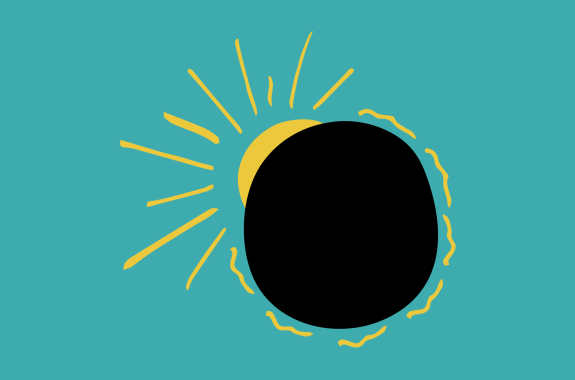Grade Level
All
subject
Earth Science
Activity Type:
solar eclipse, eclipse safety, Heliophysics Big Year
Este recurso está disponible en español. This resource is available in Spanish.
Total solar eclipses—where the Sun is completely blocked by the moon—are exciting to witness. They’re a relatively rare event. Though total solar eclipses are visible on Earth roughly every 18 months, they cannot be seen from everywhere. You need to be in the path of totality to observe this astronomical event, which is why they’re so special. The United States was in the path of a total solar eclipse in 1991 and 2017 and will be again on April 8, 2024. After that, the contiguous United States will not see another total solar eclipse for 20 years.
![]()
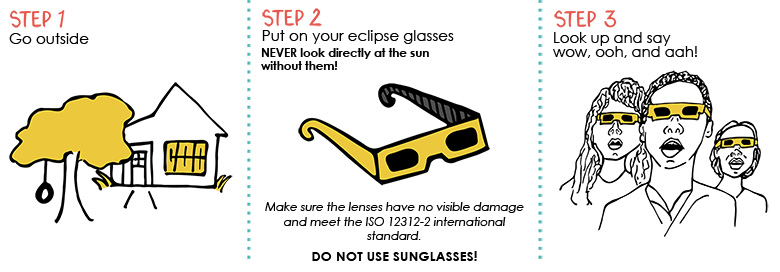
Psst! With your new eclipse glasses, you can look at the sun on any clear day. So go out and give it a try!
Solar Eclipse Safety Tips
Safe eclipse viewing glasses or handheld solar viewers have certification (ISO 12312-2 international standard) and manufacturer information printed on them. Do not use filters that are scratched, punctured, or wrinkled. Do not use sunglasses because they are not safe for looking directly at the sun! If you don’t have access to eclipse glasses or handheld solar viewers, use a pinhole viewer or solar viewing projector.
Still need eclipse glasses? Try your local public radio station, public library, or science center. You can also purchase eclipse glasses here or here. Check out this list of reputable providers compiled by the American Astronomical Society for more recommendations of where to purchase glasses online.
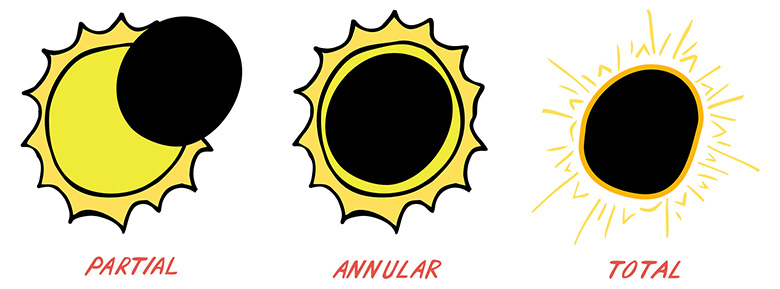
If you are in the path of totality the sun will be completely hidden from view and the sky will appear dark. In the path of totality, you can remove your eclipse glasses during the brief period of time when the moon is completely blocking the sun. The sky will darken as if it were dawn or dusk. You’ll know it’s safe when you can no longer see any part of the Sun through eclipse glasses or a solar viewer. If you want a sneak peak of what to expect, or will not be in the path of totality, visit the Eclipse MegaMovie, which compiled photos taken by volunteers across the U.S. during the 2017 eclipse.
![]()
The moon is in the path of the sun’s light, so it casts a shadow on the earth. During the day, the moon will seem to move over the sun, blocking sun’s light. These three bodies have to be lined up exactly for this to occur. If you are in the “path of totality,” you will see the sun’s corona.
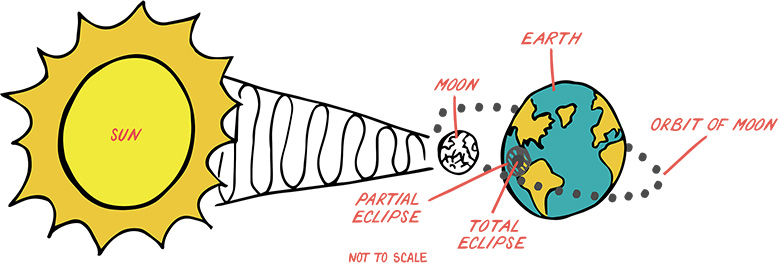
![]()
Eclipses occur when either the earth or the moon blocks light from the sun. Solar and lunar eclipses occur during periodic alignments of the Sun, Earth, and the Moon.
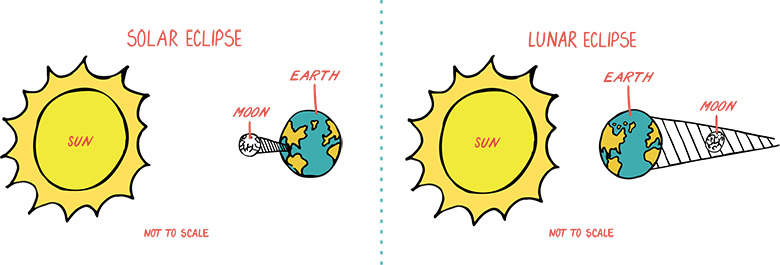
![]()
The moon’s orbit is tilted 5 degrees from the earth’s orbit (around the sun), so the moon is usually too high or too low to cause a solar eclipse.
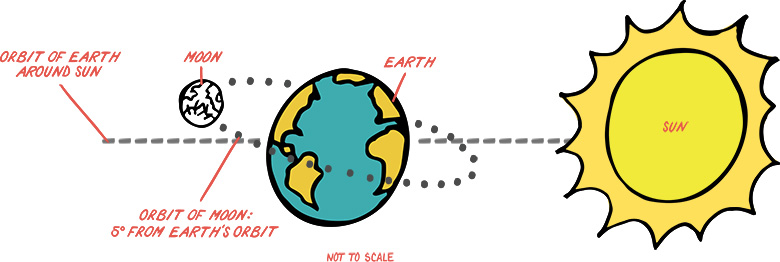
For more information about the 2024 solar eclipse visit https://science.nasa.gov/eclipses/future-eclipses/eclipse-2024/
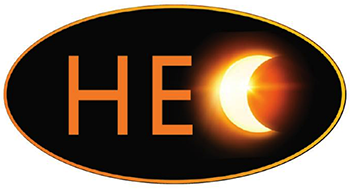
This resource was developed in collaboration with the NASA Heliophysics Education Consortium.
Illustrations by Carrie Lapolla.
Educator's Toolbox
Meet the Writer
About Xochitl Garcia
@msxgarciaXochitl Garcia was Science Friday’s K-12 education program manager. She is a former teacher who spends her time cooking, playing board games, and designing science investigations from odds and ends she’s stockpiled in the office (and in various drawers at home).
